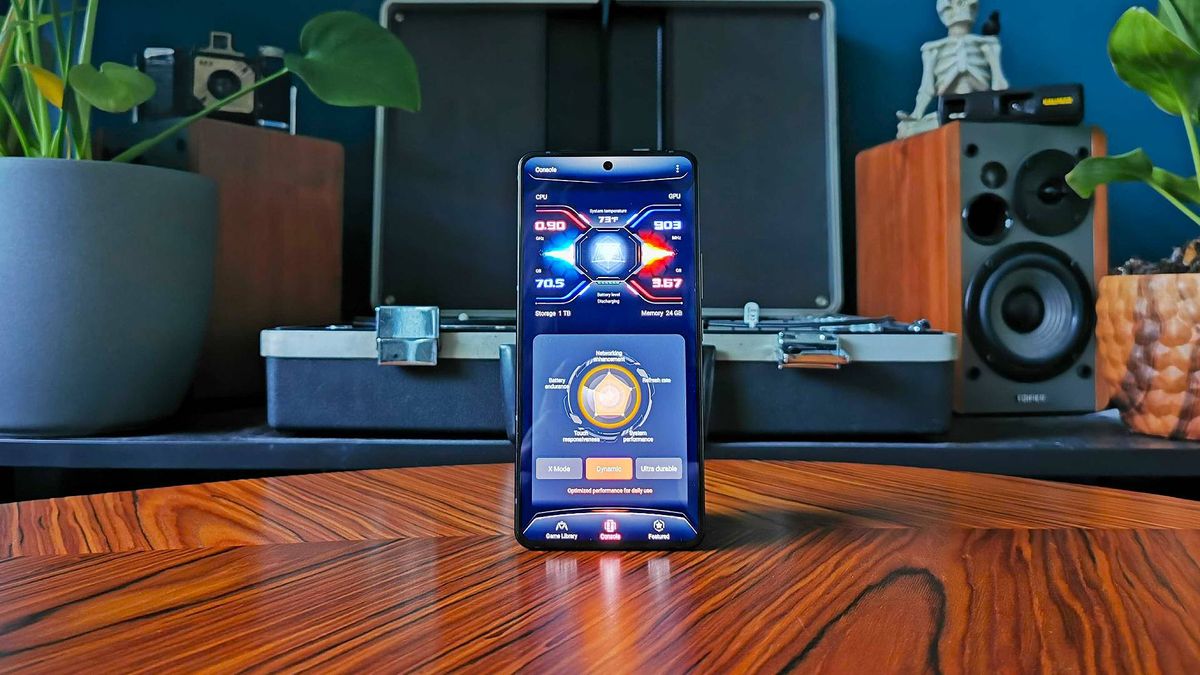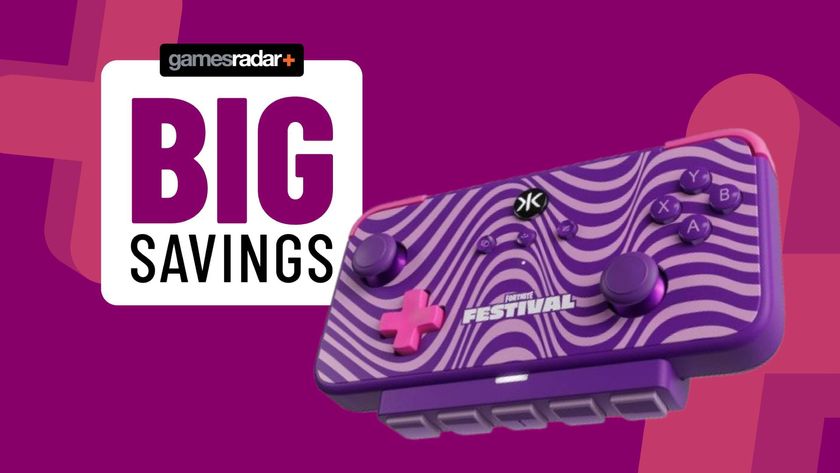12DOVE Verdict
The Asus ROG Phone 8 Pro sets a new bar for other premium smartphone rivals to beat, and its new look makes a huge difference. Not only has this pocket rocket helped me get into mobile gaming, but it proves that gaming-grade hardware can look universally sleek while still retaining some flashy elements. While picking one up is going to upset your bank account, you'll struggle to find an alternative that can pull off the same level of performance.
Pros
- +
New sleek design
- +
Rear dot matrix screen is dazzling
- +
Cutting edge performance
- +
Surprisingly great camera
- +
Touch triggers still slap
Cons
- -
Monstrously expensive
- -
Offset USB-C port makes using mobile controllers awkward
Why you can trust 12DOVE
Prior to getting my hands on the new Asus ROG Phone 8 Pro for review, I figured it’d stick with the usual gamery aesthetic. You only have to look at the hardware maker’s previous smartphone endeavours to know what the company is all about, and I’d be lying if I said I don’t find needless RGB lighting and space-age shenanigans offputting. Thankfully, that’s not the case at all with this new pocket-sized powerhouse, and I actually think the ROG 8 is one of the best looking phones I’ve had the pleasure of using.
Of course, the main reason to pick up the Asus ROG Phone 8 Pro is performance, as the best gaming phone contender will sit on the most powerful throne throughout 2024. That said, prices do start at $1,200, so it’d be disappointing if it didn’t boast serious smartphone specs. We’re talking about a Qualcomm Snapdragon 8 Gen 3 processor that could give even gaming handhelds a run for their money, and up to 24GB RAM means you won’t have to worry about whether your phone will actually run the latest games for at least a few years.
I think one of the things that caught me off guard most is the fact the Asus ROG Phone 8 has effectively got me into mobile gaming. Don’t get me wrong, I’m not going to retire my Steam Deck and start using this pricey phone full time, but I’m one step closer to regularly investing in the latest Play Store releases. There’s just something about the device’s design and physical prowess that makes playing games on it more appealing, not to mention perks like capacitive shoulder buttons to help controls feel that bit less virtual.
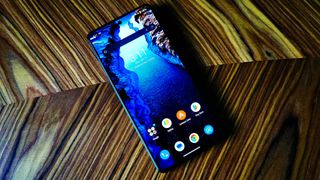
Specs
Spec sheets often only tell half a story, but let’s delve into what the Asus ROG Phone 8 Pro has to offer on paper before discussing my personal experience. As mentioned above, the latest version of the smartphone is armed with a Qualcomm Snapdragon 8 Gen 3 chipset, but the rest varies based on whether you opt for the vanilla or ‘Pro’ version of the pocket rocket. The latter comes with up to 24GB LPDDR5X RAM and 1TB storage, whereas the base model sticks with a ever so slightly more conventional 16GB RAM and 512GB storage combo.
| Processor | Qualcomm Snapdragon 8 Gen 3 |
| RAM | Up to 24GB |
| Storage | Up to 1TB |
| Display | 6.78-inch AMOLED, 2448 x 1080, 165Hz |
| Battery | 5500mAh |
| Cameras | 32MP front, 50MP main rear, 13MP ultra-wide |
| Ports | 2x USB-C, 1x 3.5mm |
| Operating system | Android 14 |
| Dimensions | 163.8x76.8x8.9mm |
| Weight | 225g |
| IP rating | IP54 |
For context, the iPhone 15 Pro Max comes with 8GB RAM across the board, and even other gaming phones like the Black Shark 5 Pro cap out at 16GB. So, it’s needless to say Asus is trying to flex when it comes to ROG Phone 8 Pro specs, but I wouldn’t expect anything less from the company that usually takes the charge with smartphone performance.
Design
I’m not saying I completely hated the ROG Phone 7 Ultimate’s gamer getup, but I’m delighted at the approach with the Asus ROG Phone 8 Pro this time around. At a glance, you won’t necessarily even realise it's designed for gaming, as its sleeker profile and slimmer body add an understated elegance compared to predecessors. The newcomer is also the first ROG phone to feature a truly edge-to-edge display, with virtually non-existent bezels helping bring out the best in its 6.78-inch E6 AMOLED display.
Like its predecessor, the ROG Phone 8 Pro also wears a small screen at the rear, but this time it’s a dot matrix display, dubbed AniMe Vision, that hides under the device’s black matte glass back. I personally absolutely love this approach, as while it definitely feels more like a novelty, it’s one that gives the device a unique flare that avoids looking garish. It is surprisingly practical, as it will enable you to view battery life and time at a glance. However, I’d be lying if I said it wasn’t the fact it can display custom animations that remind me of something like the Vectrex, and there’s even a little ‘pew pew’ spaceship GIF included in the Armoury Crate menu.
In the hand, the ROG Phone 8 Pro feels relatively pleasant to hold, with buttons like power and volume feeling appropriately within each on the right side. Activating the under screen fingerprint sensor can also be easily achieved with one hand, and as I’ve become extremely clumsy with phones in my old age, I didn’t feel like I was going to drop this rectangle like with other slidey devices I’ve used previously.

That could be down to the textured feel of that aforementioned matte back in comparison to glossy glass devices, or perhaps Asus has managed to balance its 225g weight nicely. Regardless, using the ROG Phone 8 Pro for everyday vertical tasks feels good, and things only get more interesting when you flip it horizontally.
Other notable design changes include a chonkier camera system bump round back and a new screen cut out at the front for the forward facing camera. Sadly, Asus decided to stick with its weird USB-C port placement at the bottom, which makes using mobile controllers like the Backbone One a bit of a pain. The fact it lives next to a 3.5mm headphone jack helps mitigate the design choice, and there’s nothing stopping you using gamepads with the phone sitting slightly off centre. Nevertheless, it does hinder the prospect of universal compatibility with controllers in the future, and it puts a damper on what is otherwise a really strong setup.
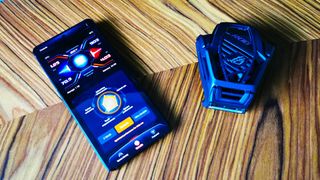
Features
If you were a big fan of the Asus ROG phone 7 Ultimate’s capacitive shoulder buttons, you’ll be delighted to hear they’re back. Just like with the previous iteration, the touch triggers provide something a bit more tactile in terms of controls, using pressure sensitivity to emulate the sensation of something mechanical. For the most part, they work wonderfully, and they help shooters like Call of Duty Mobile feel less like a boiled down version of its console release counterparts.
However, if you really can’t vibe with the idea of touch controls, you’ll find an AeroActive Cooler X in the box with two rear triggers attached (providing you opt for the top end model). Just like before, the add-on attaches to the phone via its extra side-mounted USB-C port, doubling up as a way to squeeze more performance out of its Snapdragon APU and add some physical buttons. It doesn’t remotely make up for making the use of mobile gamepads awkward, but it does the job if you want more physical controls within reach.
Now that we’ve got to grips with the physical side of the ROG Phone 8, let’s talk software. Naturally, this new flagship Asus device comes armed with Android 14, the latest version of the operation system, meaning it benefits from all the new features and Google services you’d expect. I’m actually pretty impressed with just how clean the OS installed on this phone is, as I was expecting it to feature some quirks since it's a ‘gaming phone’. Yet, everything looks pretty close to what you’d find on something like the Google Pixel 8, with all the extra gaming goodies instead residing within the Armoury Crate app.
I use an Asus laptop as my daily driver, and it’s needless to say me and Armoury Crate have a complicated relationship. Yet, the mobile version of the software manages to avoid the sins of its father, as it offers up swift access to performance profiles, virtual button mapping, AniMe Vision options, and system stats. The interface avoids feeling over cluttered, and every time I launched it in search of something, I was able to find what I was looking for within a few seconds.
I did admittedly get a bit worried when I was launched into an ‘unboxing mission’ after booting the phone up for the first time, but mini game tutorials aside, the software also avoids feeling intrusive when not in use. This all helps the phone feel less aggressively gamery while also ensuring that if you want to use it as a portable mobile powerhouse, you’ll be able to do so instantly.
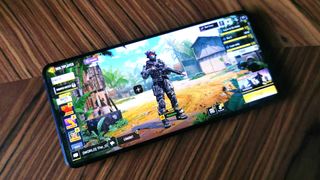
Performance
If you’ve ever tried to run games on your smartphone, you’ll know the experience can vary wildly. You don’t necessarily need a gaming monster like the ROG Phone 8 Pro to run every Play Store release out there, but you will undoubtedly come across some 3D outings that can’t quite pull off the same slick frame rates without a decent chip. Therefore, I was hungry for next to flawless performance and stability while taking Asus’ Snapdragon 8 Gen 3-powered champion for a spin, and my tests left me feeling satiated.
Call of Duty isn’t normally my go-to shooter, but I decided to give the mobile version a whirl using the ROG Phone 8, as it helped me try out both the phone’s capacitive triggers and the optional cooler’s physical buttons. It takes a lot to shock me when it comes to speedy visuals, especially since I’m used to testing the best graphics cards for desktop, but I was taken back with how slick the FPS game felt on the phone’s 165Hz screen.
It’s worth noting that COD Mobile specifically caps out at 120fps, so actually making full use of that higher refresh rate is harder than you’d think. Yet, breezing through and gunning down online strangers at a high frame rate using those touch triggers still felt incredible, and I’m excited to try out other shooters when I get the chance.
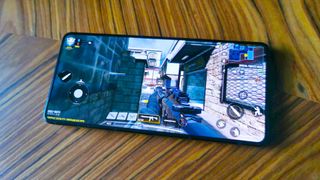
Next, I installed Honkai Star Rail, as I’ve experienced the frame rate horrors this RPG is capable of first hand on lesser devices (looking at you, Logitech G Cloud). Again, my standards were high going in, but I’m pleased to say my performance expectations were matched. Sadly, the gatcha game is capped at 60fps on mobile, meaning the experience felt pretty much the same as it did on the Razer Edge. Still, we’re talking about no jittering or fps dips, which means it passes the smell test on that front.
Did you know there’s a mobile port of Alien Isolation? No? Well, neither did I before looking into games to try out on the ROG Phone 8. Trying out one of my favorite horror PC romps on a high spec smartphone felt like a great way to test for any performance caveats, but I was actually initially greeted with a “this device is not supported” message after launching the game. Despite this, the game actually runs flawlessly, and while the frame rate is most certainly capped at 60fps, the high refresh 2,400 by 1,080 screen helps the iconic sci-fi adventure look incredible. I also still jumped out my skin while playing, which isn’t great when you’re holding an expensive rectangle made of glass.
| Benchmark | Result |
|---|---|
| Solar Bay | 8,684 |
| Wild Life Extreme | 5,164 |
In my quest to find demanding Android games to make the ROG Phone 8 sweat, I also acquainted myself with the world of Black Desert. This is where that included USB-C cooler comes in handy, as this game warns you before jumping in that max settings can overheat your device. However, even without the add-on, I was able to maintain 60fps without things getting too toasty, and automatic settings didn’t feel the need to kick in for protection. If I manage to properly get into the MMO, I’ll be sure to update this review if any performance shenanigans occurs over time, but I’m pretty impressed with what I’ve experienced thus far.
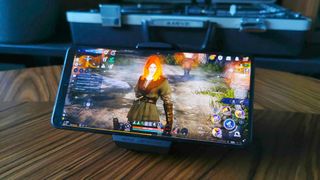
To round off testing, I decided to try out a bit of cloud gaming using GeForce Now and Xbox Game Pass. Yes, using streaming on a phone of this calibre is slightly ironic, but it makes for a good way to test out the phone’s wireless stability. As you’d maybe expect from a mobile in 2024, I was able to play PC and console games without any hiccups whatsoever, and I enjoyed roaming around Night City in Cyberpunk 2077 using the device more than I thought I would.
As for battery life, I was able to get around 4-5 hours out of the ROG Phone 8 when running intensive games, and the device typically drains around 20% every 12 hours when sitting idle. Not too shabby considering it’s armed with a smaller capacity than its predecessor, and it’ll last around 2 days if you prevent it from working too hard. Generally, I was able to get more than a full day out of the phone with some gaming thrown in with a single charge, but you can somewhat strike a balance by taking advantage of Armoury Crate profiles.
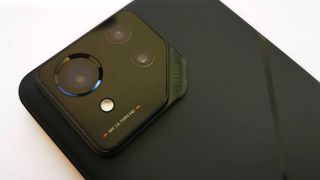
Camera
Typically, I wouldn’t expect a gaming phone to boast anything more than an acceptable camera. Yet, the Asus ROG Phone 8’s tri-camera setup is robust, producing decent results across all lenses. I take a lot of product photos for reviews, and the jump compared to devices from a few years ago is pretty significant. The 50MP sensor handles low light environments effectively, and colors hold up in terms of accuracy.
As a content creator nerd, I’m also stoked about the ROG Phone 8’s video capture capabilities, as it can both pull off 4k 60fps and ramp things up to 8k 24fps. That latter resolution will serve as many people’s first experience messing around with anything beyond UHD, and switching to the higher spec output doesn’t compromise other qualities. Simply put, there’s a chance I’ll actually retire my full blown Sony 4K HandyCam thanks to this phone.
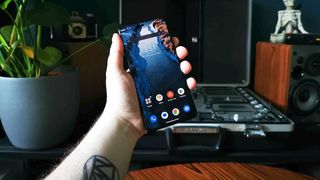
Should you buy the Asus ROG Phone 8 Pro?
The Asus ROG Phone 8 stands as a testament to the maturity of gaming phones as we enter 2024, and it’ll no doubt sit pretty on the premium gaming phone throne throughout the year ahead. Its price does make my head hurt a little, and I am still a bit mad at that off-centre USB-C port hampering mobile controller compatibility. However, If you’re looking for something with specs and power that should withstand the test of time, Asus’ new frontrunner is a solid option, especially if you’re not really into the aesthetic tropes of typical gaming devices out there.
Ultimately, if you’re looking to use a smartphone as one of your main gaming platforms, the Asus ROG Phone 8 is well worth the investment. Otherwise, you’ll be able to pick up a similar premium Android daily driver without splashing out to this degree. If any device is going to help you properly get into mobile gaming, it’s going to be this one, even if the Play Store itself has a somewhat limited library.
How I tested the Asus ROG Phone 8 Pro
Over the course of a month, I used the Asus ROG Phone 8 Pro as my daily driver for both calls, texts, internet access, and mobile gaming. I used the device connected to both my at-home Gigabit Wi-Fi connection and 5G where possible, which enabled me to download games like Call of Duty Mobile, Black Desert, Alien Isolation, and Honkai Star Rail. While testing each, I used on-screen controls, the phone’s touch triggers, and the included AeroActive Cooler X in compatible scenarios. I also connected controllers like the Backbone One and Razer Kishi to check whether the offset USB-C port would affect compatibility.
If you’d like to learn more about how we test portable gaming devices, check out our Gamesradar+ Hardware policy for more information.
Looking for more portable devices? Check out the best gaming laptop for a selection of powerful on the go rigs. Alternatively, stick with mobile and take a peek at the best gaming tablet options in 2024.

I’ve been messing around with PCs, video game consoles, and tech since before I could speak. Don’t get me wrong, I kickstarted my relationship with technology by jamming a Hot Wheels double-decker bus into my parent’s VCR, but we all have to start somewhere. I even somehow managed to become a walking, talking buyer’s guide at my teenage supermarket job, which helped me accept my career fate. So, rather than try to realise my musician dreams, or see out my University degree, I started running my own retro pop culture site and writing about video games and tech for the likes of TechRadar, The Daily Star, and the BBC before eventually ending up with a job covering graphics card shenanigans at PCGamesN. Now, I’m your friendly neighbourhood Hardware Editor at GamesRadar, and it’s my job to make sure you can kick butt in all your favourite games using the best gaming hardware, whether you’re a sucker for handhelds like the Steam Deck and Nintendo Switch or a hardcore gaming PC enthusiast.
